Overview of Smoked Salmon
Smoked salmon is a culinary delight enjoyed by food lovers worldwide. How to smoke salmon involves curing and smoking salmon fillets, resulting in a rich, smoky flavor that enhances the natural taste of the fish. The tradition of smoking fish dates back centuries and was originally used as a method of preservation. Today, while refrigeration has largely replaced smoking as a preservation technique, the method remains popular for the unique flavor and texture it imparts.
Benefits of Smoking Salmon
Smoking not only enhances the flavor of salmon but also helps preserve it. The process reduces moisture content, slowing down bacterial growth and extending the fish’s shelf life. Additionally, smoked salmon is packed with essential nutrients like omega-3 fatty acids, proteins, and vitamins, making it a nutritious and delicious choice.
Types of Smoking Methods
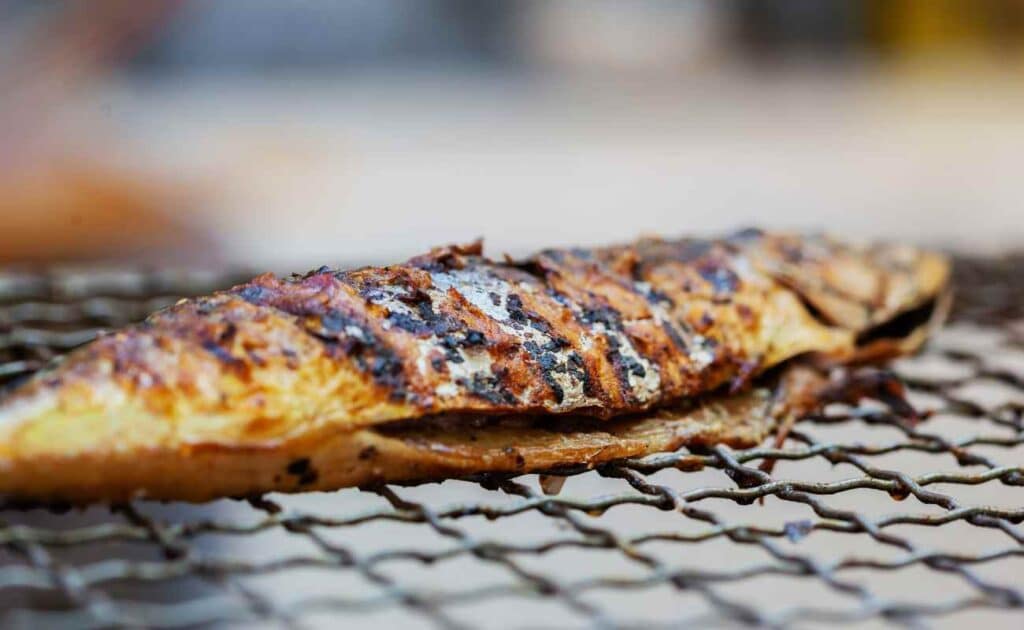
Cold Smoking
Cold smoking involves curing the salmon at low temperatures, typically between 68-86°F (20-30°C), for an extended period. The result is a delicate, smooth texture with a mild smoky flavor. However, because the fish is not cooked, it requires a curing step to ensure it’s safe to eat. Cold-smoked salmon is perfect for dishes where a light smoke flavor is desired, such as bagels with cream cheese.
Hot Smoking
Hot smoking cooks the salmon at higher temperatures, usually between 120-180°F (49-82°C). This method gives the fish a firmer texture and a more intense smoky flavor. Hot-smoked salmon is fully cooked and can be eaten directly from the smoker, making it ideal for salads, pasta, or as a standalone snack.
Differences Between Cold and Hot Smoking
The main difference between cold and hot smoking lies in the temperature and texture of the final product. Cold-smoked salmon is smooth, silky, and often served in thin slices, while hot-smoked salmon is flaky, firm, and has a more pronounced smoke flavor. Cold smoking is more delicate and requires careful temperature control, whereas hot smoking is quicker and more forgiving.
Selecting the Right Salmon
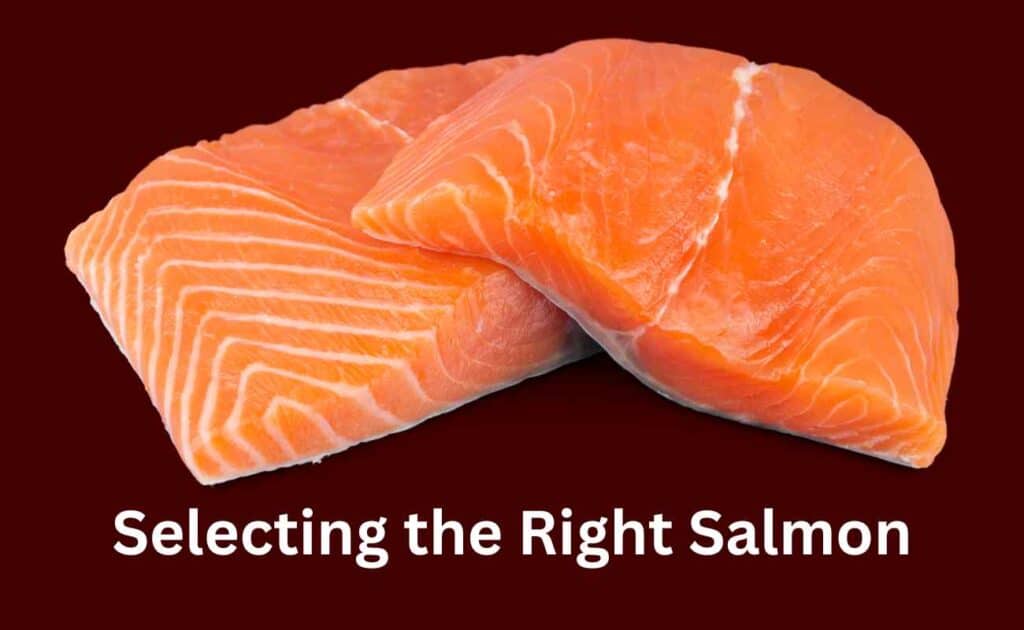
Fresh vs. Frozen
When choosing salmon for smoking, both fresh and frozen options are viable. Fresh salmon is often preferred for its texture, but high-quality frozen salmon can also yield excellent results. If using frozen salmon, ensure it’s fully thawed before smoking.
Best Salmon Types for Smoking
Different types of salmon offer varying flavors and textures. Atlantic salmon is commonly used due to its high fat content, which absorbs smoke well. King salmon, known for its rich flavor and buttery texture, is also a popular choice. Sockeye and Coho salmon, with their firm texture and deep color, are ideal for both cold and hot smoking.
Importance of Quality
Quality is crucial when smoking salmon. Look for salmon with bright, clear eyes, firm flesh, and a fresh smell. The skin should be shiny and free of blemishes. High-quality salmon will result in a better-tasting smoked product.
Preparing the Salmon
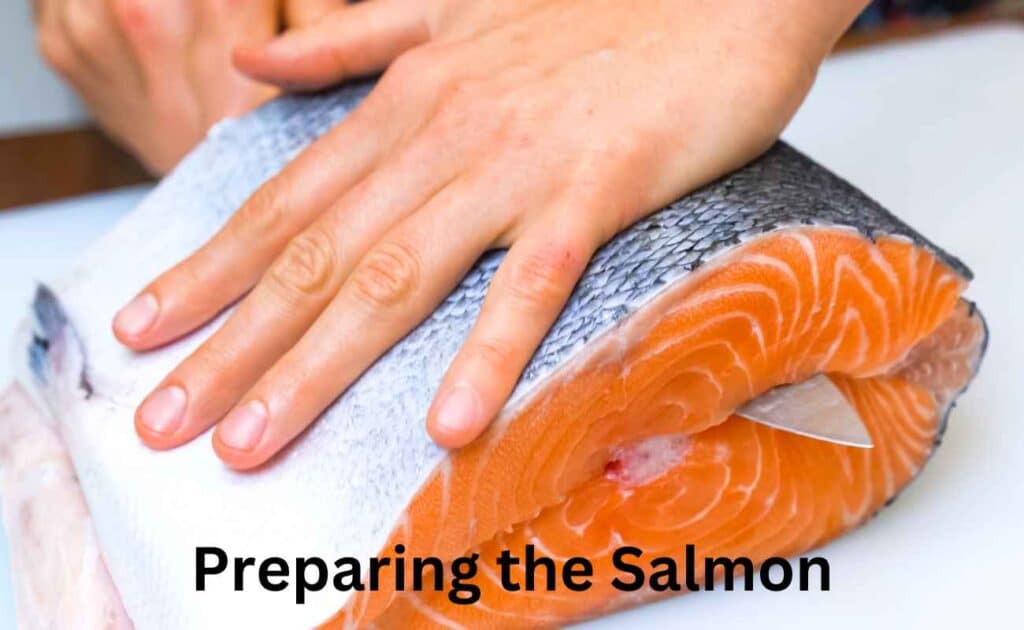
Cleaning and Deboning
Before smoking, clean the salmon thoroughly. Remove any scales and bones, as they can interfere with the smoking process. A fillet knife is ideal for this task. After cleaning, pat the salmon dry with paper towels.
Curing the Salmon
Curing is a critical step that involves coating the salmon in a mixture of salt, sugar, and spices to draw out moisture. There are two main methods: dry curing and wet brining. In dry curing, the salmon is covered with a dry mixture of salt and sugar, while wet brining involves submerging the salmon in a saltwater solution. The curing process can take anywhere from 6 to 24 hours, depending on the thickness of the fillet. Proper curing not only enhances flavor but also ensures food safety.
Drying the Salmon
After curing, the salmon needs to be dried before smoking. This step is essential as it helps form a pellicle, a tacky surface on the fish that allows smoke to adhere better. Place the salmon on a rack in a cool, well-ventilated area, or in the refrigerator, for 2-4 hours.
The Smoking Process
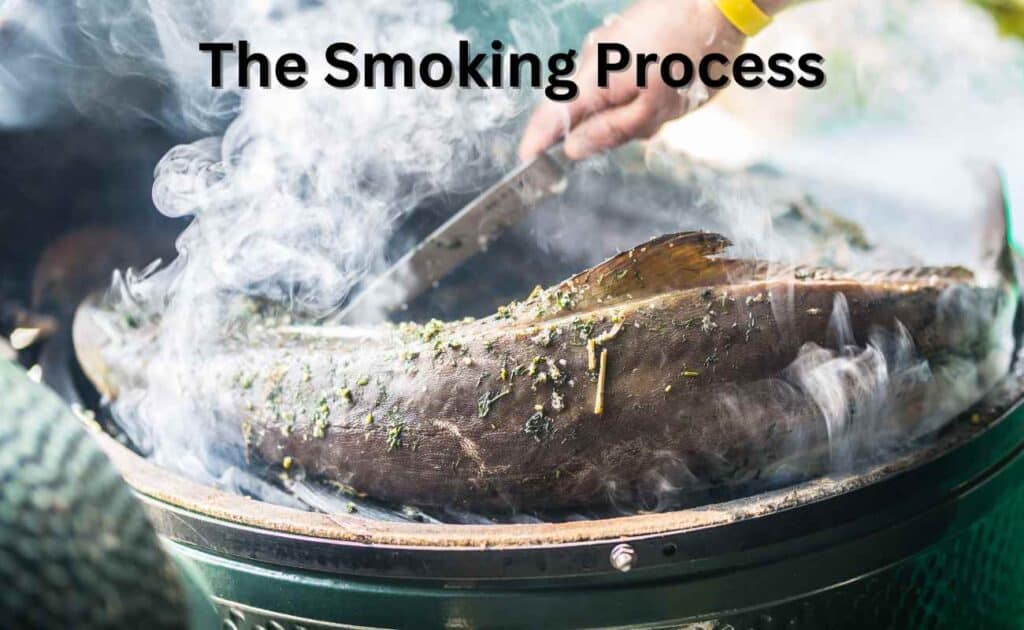
Setting Up the Smoker
The type of smoker you use—whether electric, charcoal, or wood—will influence the flavor of your salmon. Set the smoker to the appropriate temperature: 68-86°F for cold smoking and 120-180°F for hot smoking. Select your wood chips carefully, as they impart distinct flavors. Alder is a classic choice for salmon, providing a sweet, mild flavor. Other good options include maple, oak, and applewood.
Smoking the Salmon
Once the smoker is ready, place the salmon on the racks, ensuring there’s enough space for the smoke to circulate. Monitor the temperature and smoke levels throughout the process. Cold smoking typically takes 12-48 hours, while hot smoking requires 3-6 hours. The salmon is ready when it reaches your desired flavor and texture.
Post-Smoking Process
After smoking, allow the salmon to cool to room temperature. Once cooled, wrap it tightly in plastic wrap or vacuum-seal it to preserve freshness. Smoked salmon can be stored in the refrigerator for up to a week or frozen for longer storage.
Serving Smoked Salmon
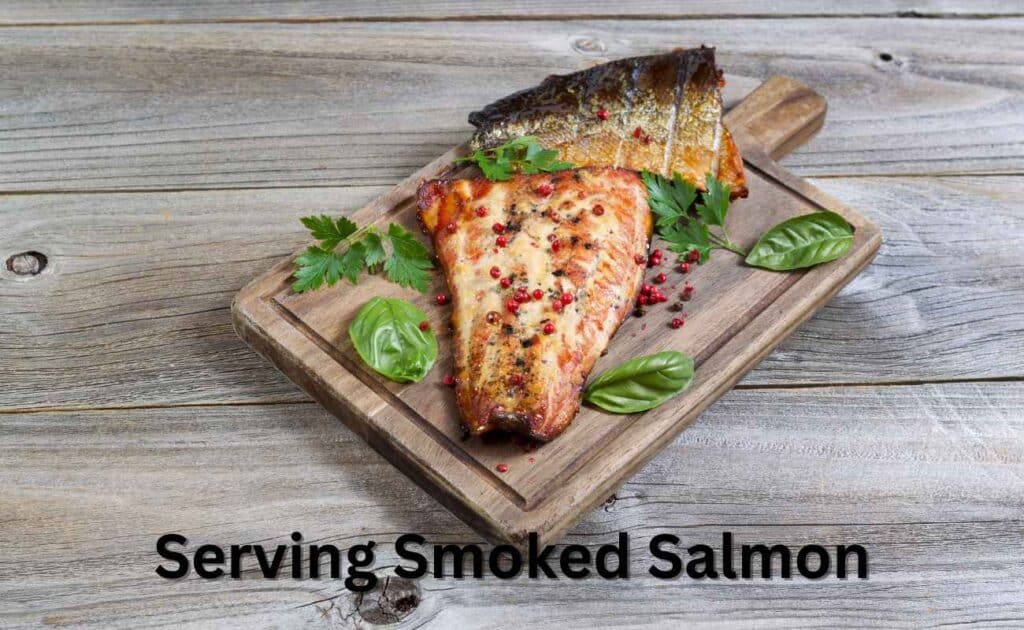
How to Serve Smoked Salmon
Smoked salmon is versatile and can be served in many ways. Popular options include serving it on bagels with cream cheese, as part of a charcuterie board, or in salads.
Pairing Suggestions
Smoked salmon pairs wonderfully with a variety of foods and beverages. It complements soft cheeses like brie and goat cheese and goes well with crisp white wines such as Sauvignon Blanc or Champagne.
Recipes Using Smoked Salmon
There are countless recipes that incorporate smoked salmon, from smoked salmon pasta to canapés and sushi rolls. Its rich, smoky flavor adds depth to any dish.
Storing and Preserving Smoked Salmon
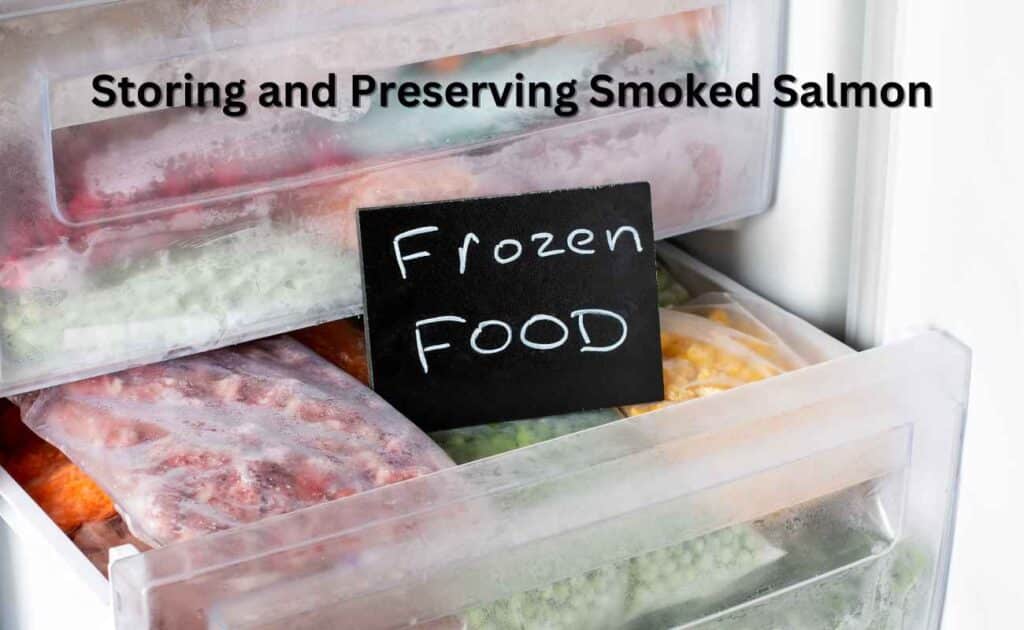
Refrigeration and Freezing
To extend the shelf life of smoked salmon, store it in the refrigerator at 32-38°F (0-3°C). Properly refrigerated, it can last up to a week. For longer storage, freezing is an option.
Vacuum Sealing
Vacuum-sealing smoked salmon before freezing helps prevent freezer burn and preserves its flavor and texture for several months.
Tips for Extending Shelf Life
To keep smoked salmon fresh, always store it in an airtight container, and avoid exposing it to air and moisture.
Troubleshooting Common Problems
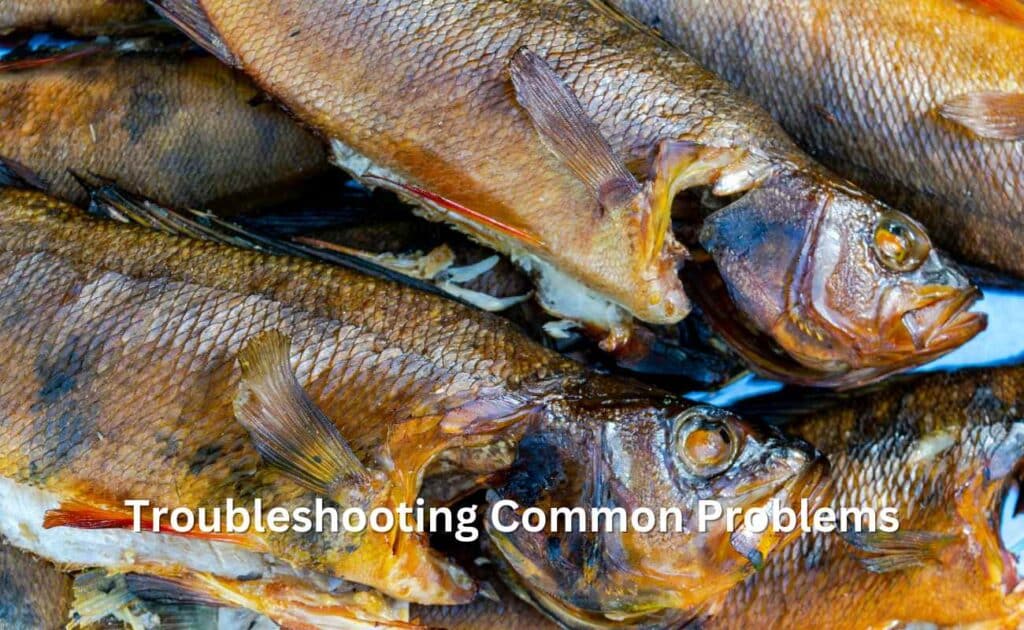
Over-Smoking
Over-smoking can result in a bitter taste. To avoid this, monitor the smoking process closely and use milder wood chips if necessary.
Undercooked Salmon
Undercooked salmon can be corrected by increasing the smoking time or using a higher temperature.
Uneven Smoking
Ensure that the smoker is properly set up and that the salmon is evenly spaced to avoid uneven smoking. Rotating the salmon during smoking can also help achieve a consistent result.
Health Considerations
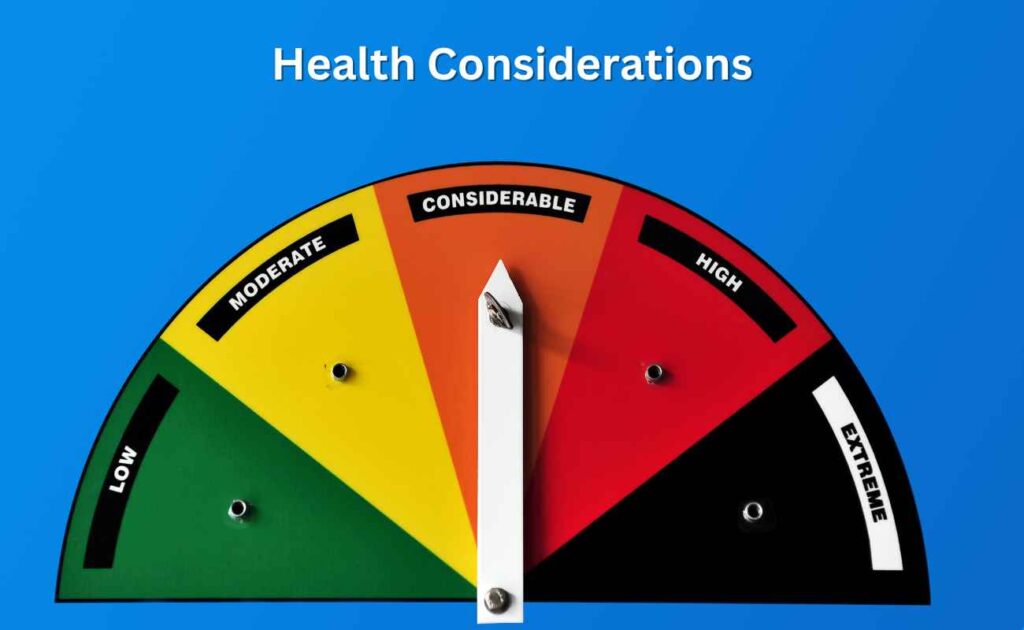
Nutritional Benefits of Smoked Salmon
Smoked salmon is rich in omega-3 fatty acids, which are beneficial for heart health. It’s also a great source of protein, vitamin D, and B vitamins.
Potential Health Risks
While smoked salmon is nutritious, it’s high in sodium, which can be a concern for those with high blood pressure. Moderation is key, and choosing lower-sodium options when available can help mitigate this risk.
Conclusion
Recap of Key Steps
Smoking salmon involves selecting the right fish, curing, drying, smoking, and finally, serving it. Each step is crucial to achieving the perfect smoked salmon.
Encouragement to Try Smoking Salmon
Smoking salmon at home may seem daunting, but with the right preparation and attention to detail, it’s a rewarding experience that yields delicious results. Whether you’re a seasoned cook or a beginner, this guide provides all the information you need to smoke salmon successfully. Give it a try, and enjoy the rich, smoky flavors of homemade smoked salmon!






GIPHY App Key not set. Please check settings